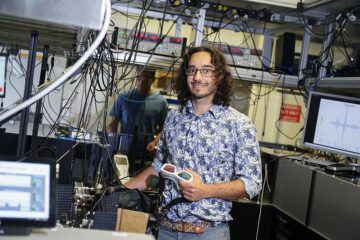Siemens Water Technologies Introduces “React and Return” Reactivated Carbon Service

The cost of virgin steam activated carbon imported to the U.S. market is expected to increase significantly. Reactivated carbon is spent carbon that is recycled by being regenerated in a rotating kiln or a multiple hearth furnace.
Once carbon is reactivated, it can be used in place of new virgin carbon for aqueous and vapor applications to remove organics. The organic materials that are driven off the spent carbon during the reactivation process are completely mineralized in the reactivation furnace and by oxidation in the afterburner to form simple, environmentally acceptable compounds. After the reactivation process is complete, the reactivated carbons are screened to specific size distributions and, after undergoing quality control certification, are packaged and ready for use in either the same or a new application.
The “React and Return” service is a highly controlled program where activated carbons are removed from a customer’s site, reactivated, and returned for reuse to the same customer. The carbon is segregated from other carbons during reactivation and storage. “React and Return” is commonly used in municipal drinking water applications.
“The reactivation process recovers 80 to 95 percent of the theoretical adsorption capacity,” says Brent Hillier, Vice President of Environmental Services at Siemens Water Technologies. “In real world applications, clients often find that there is negligible difference between the performance of virgin and reactivated carbons.”
The benefits of using reactivated carbon are cost savings and waste minimization. The process of carbon recycling reduces operating costs, since the relative costs of reactivation are less than the cost of creating new, virgin carbon. Some facilities in the U.S. receive environmental credits issued by regulatory agencies for waste minimization.
Reactivated carbon performance can be measured with ASTM (American Society for Testing and Materials) and AWWA (American Water Works Association) standard test methods to measure properties such as iodine/butane number, abrasion/hardness number, particle size distribution (mesh size), apparent density and moisture content.
An increase of more than 70 percent in the cost of virgin carbon is due to a tariff by the U.S. Department of Commerce on imports of activated carbon from China.
The Reactivated Carbon Service program was shown at the AWWA’s 2007 Annual Conference & Exposition (ACE07) at Booth 1615Siemens Water Technologies introduces “React and Return”, a full-service reactivated carbon program to the North American market. Reactivated carbon is a cost-effective alternative to virgin carbon for customers that need to meet water quality guidelines for organic contaminant removal.
Siemens Water Technologies delivers cost-effective, reliable water and wastewater treatment systems and services to municipal, industrial, commercial and institutional customers worldwide. The division “Water Technologies” is part of Siemens' Industrial Solutions and Services Group (I&S) which is a system and solution provider for industrial and infrastructure facilities and global service provider for the plant and projects business covering planning, installation, operation and the entire life cycle. In fiscal 2006 (to September 30), I&S employed a total of 36,200 people worldwide and achieved total sales of EUR 8.819 billion, according to U.S. GAAP.
Media Contact
Weitere Informationen:
http://www.siemens.com/water http://www.industry.siemens.com/data/presse/pics/05076215.jpgAlle Nachrichten aus der Kategorie: Unternehmensmeldungen
Neueste Beiträge

Neue universelle lichtbasierte Technik zur Kontrolle der Talpolarisation
Ein internationales Forscherteam berichtet in Nature über eine neue Methode, mit der zum ersten Mal die Talpolarisation in zentrosymmetrischen Bulk-Materialien auf eine nicht materialspezifische Weise erreicht wird. Diese „universelle Technik“…

Tumorzellen hebeln das Immunsystem früh aus
Neu entdeckter Mechanismus könnte Krebs-Immuntherapien deutlich verbessern. Tumore verhindern aktiv, dass sich Immunantworten durch sogenannte zytotoxische T-Zellen bilden, die den Krebs bekämpfen könnten. Wie das genau geschieht, beschreiben jetzt erstmals…

Immunzellen in den Startlöchern: „Allzeit bereit“ ist harte Arbeit
Wenn Krankheitserreger in den Körper eindringen, muss das Immunsystem sofort reagieren und eine Infektion verhindern oder eindämmen. Doch wie halten sich unsere Abwehrzellen bereit, wenn kein Angreifer in Sicht ist?…





















